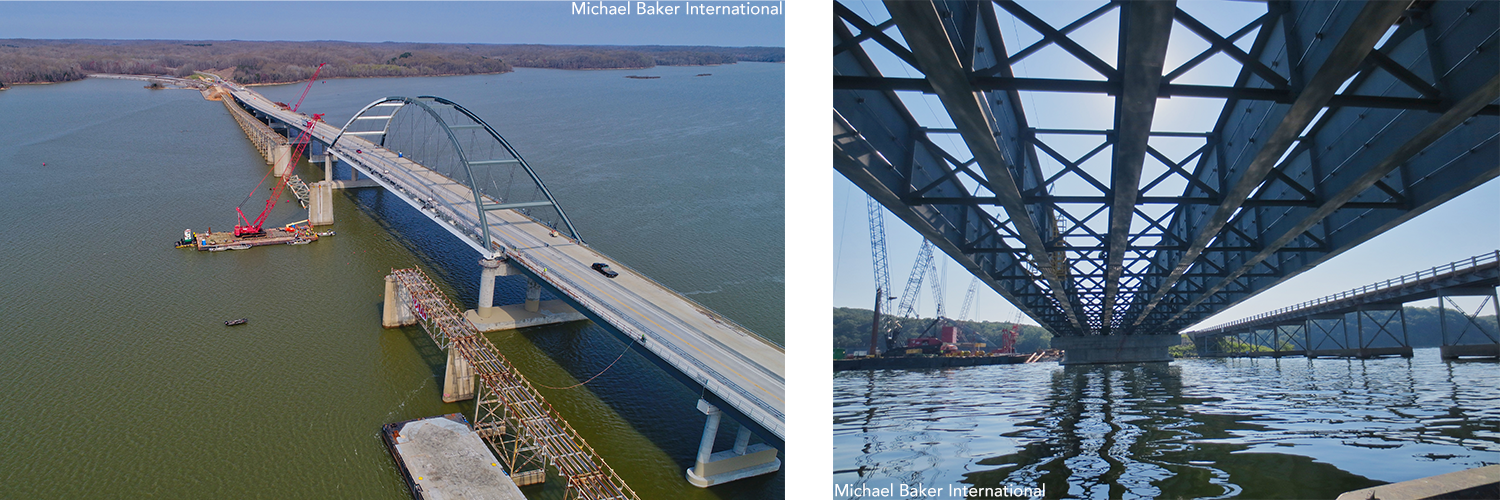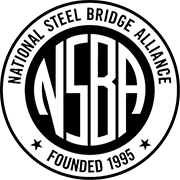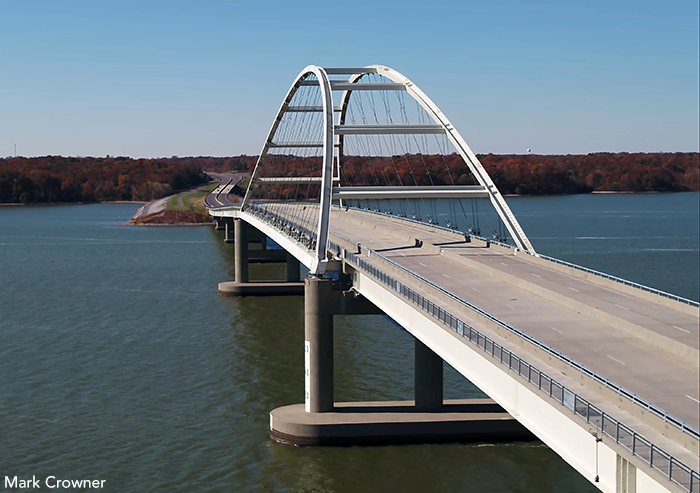National Steel Bridge Alliance
Featured Steel Bridge Project
Lake Bridges over Kentucky Lake and Lake Barkley
Marshall and Trigg Counties Kentucky
Opened to traffic in 2018, the new U.S. 68/KY 80 Bridges across Kentucky Lake (Tennessee River) and Lake Barkley (Cumberland River) replaced two narrow 20-ft-wide, 1930s-era truss bridges in the Land Between the Lakes Recreation Area in western Kentucky. This project was part of the U.S. 68/KY 80 corridor widening effort by the Kentucky Transportation Cabinet, and brought the state closer to the long-term goal of having a four-lane, east-west highway in the southern portion of Kentucky. The main spans over each of the navigable waterways with substantial barge traffic feature a unique, basket-handle tied arch superstructure with steel plate girder approaches.
The Kentucky Lake bridge is 3,611 ft long and has three units: the 1,409-ft-long four-span west approach, the 550-ft-long steel tied-arch main span, and the 1,652-ft-long five-span east approach. The Lake Barkley bridge stands at 3,805 ft long and has three units: the 1,799.5-ft-long seven-span west approach, the 550-ft-long steel tied-arch main span, and the 1,442.5-ft-long six-span east approach. The 75-ft-wide bridge deck carries two lanes of traffic in each direction, and a barrier-separated 10-ft-wide multi-use path on the south side. The Kentucky Lake crossing also includes a 580-ft-long three-span welded plate girder bridge to leave an environmentally sensitive lagoon unscathed.
In total, the bridges contain nearly 22,000 tons of painted structural steel. Steel permitted the use of long spans in the approaches and main span, allowing the structure to span sensitive geotechnical areas and reduce risk in foundation installation. Furthermore, the bridges are within the New Madrid Seismic Zone, and the lighter and efficient steel approaches and tied-arch spans help to reduce seismic loads transmitted to the substructure.
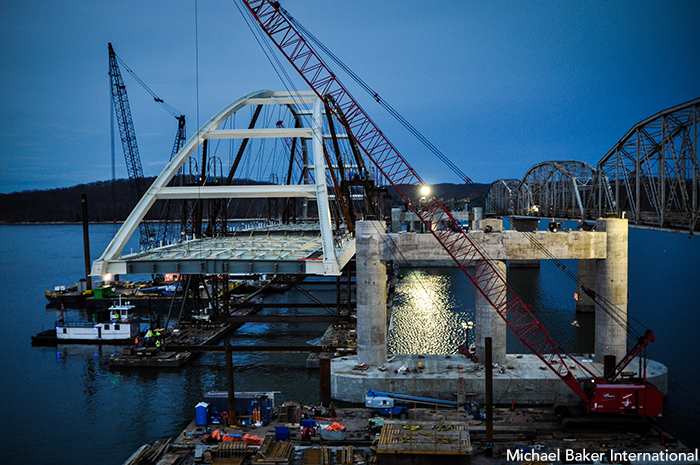
The 550-ft-long main spans feature one of the world's longest open section arch ribs. The arch ribs use a 4-ft-by-4-ft H-section shape, which simplifies fabrication, erection, inspection, and maintenance. The open surface of the H-section eliminates the need for access inside the rib and improves the quality and safety of inspections. In addition, the H-section offers fabrication advantages due to easier assembly and welding access as compared with a box-shaped section. The use of an open shape allows the bridges to maintain an open look to blend with the surrounding environment, providing an aesthetic that both the client and the public preferred.
A unique parallelogram-shaped tie girder is used to facilitate fabrication and erection of the bridges. The tie girders' parallelogram shape facilitates a simpler knuckle connection to the inclined arch ribs. Internal redundancy of the tie girder is achieved by bolting the four sides of the parallelogram together, preventing a possible fracture in one plate from propagating to adjacent plates. The design assumes that in the unlikely extreme case that one plate is fractured, the remaining three plates will prevent failure.
Accelerated bridge construction techniques were used to erect the arch spans, which were erected on barges, floated to the main span piers, and lifted into place. This method of construction ultimately saved time by allowing for simultaneous construction activities associated with the approach spans and the main span.
These new innovative Lake Bridges over Kentucky Lake and Lake Barkley stand as iconic landmarks for western Kentucky, addressing the long-term transportation needs in this 170,000-acre national recreational area.
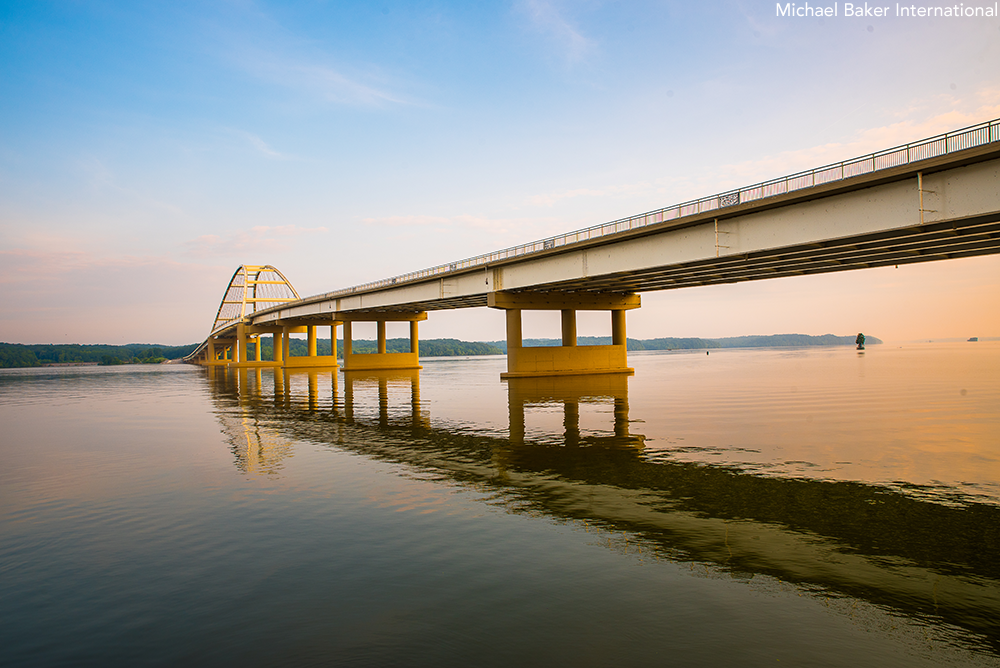
More information can be found here:
Papers from the 2016 World Steel Bridge Symposium:
- Kentucky Lake Bridge Baskethandle Network Tied Arch Superstructure Design
- Seismic Design of the Kentucky Lake and Lake Barkley Approach Spans
Presentations from the 2016 World Steel Bridge Symposium:
